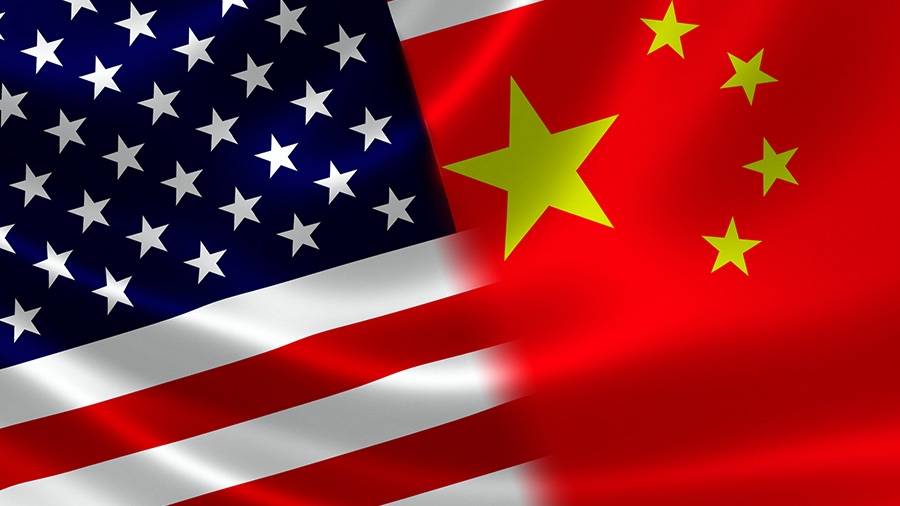No Change In US Partisanship Towards China After Mid-Term Election Results – But China Market Opportunities For US Investors Continue To Grow

Political differences will be exploited but US business investment into China will increase
By Chris Devonshire-Ellis
There is unlikely to be any change in the United States political attitude towards China following the US Mid-Term elections, although business interest can be expected to remain high. Our views on the ground in both China, where we have had offices since 1992, and the United States, where we have representation and service hundreds of US investors into China and Asia, dictate the results of the US Mid-Term elections are unlikely to introduce any sea-change in US-China relations. We can examine the situation from both sides of the coin: political and business:
US-China Political Relations After The Mid-Terms

With the Democrats retaining the Senate, and the Republicans likely to take the House, a form of parity’ has been restored, with the advantage in this conundrum slightly in China’s favor. This is because while the Republicans tend to take a highly negative approach to China – it was President Trump who introduced multiple trade tariffs on China, which largely remain intact today – the House may make a great deal of anti-China noise over a multitude of China’s internal issues, the Senate has the power to dilute these by not acting upon motions or watering down the more contentious claims.
That said, the Republicans are more pro-conflict: Taiwan will continue to be flagged up as a major concern and plays well with US weapons manufacturers and the military.
Both however tend to agree on sanctions towards China, which are likely to continue to be a sticking point with Beijing as the US government both Republican and Democrat views China as a threat towards US technologies. That can be expected to continue on both sides of the US political divide. Anti-China partisanship is also likely to be retroactive in pointing fingers at responsibility for Covid. This is despite the fact that pandemics by their nature are global, and the WTO itself was woefully unprepared and underfunded. Today’s American politics requires blame being apportioned, and China will be the focal point here as will on-going issues concerning Uyghurs and accusations of ‘Autocracy’.
The focus on democracy vs. autocracy can be expected to become increasingly shrill as the United States is poised for Presidential elections in November 2024. In many ways, there is not much difference between the US and China is this regard, except that although ‘Presidential elections’ – although they are not styled that way in China – do take place – the democratic systems within both are followed. Chinese President Xi Jinping for example still requires the support of the CPC members to remain President.
The differences between the US and China revolve around China’s One Party System, where one ideology and methodology debate the national direction ahead, and the United States, which is a two-party system with conflicting views, and especially today. In order to make progress, concessions must be reached – with these often being made without reference to vested interests – an example of ‘cloak and dagger’ democratic politics. The struggle between both systems as a means of managing both domestic and global issues remain.
While US political commentators have been talking up ‘democracy working’ – in the US the reality is much of this has been aimed at denying ex-President Trump and his supporter’s leeway, the country remains politically divided – whereas China is not. That will mean a continuing uncertainty as concerns the overall direction the US can be expected to take, and that will reflect erratically upon its relations with China. Overall, however, a divided US House and Senate is marginally an improvement for Beijing, although the way ahead will remain politically rocky with Taiwan a key issue still capable of blowing up relations to serious red lines, while the undercurrent of criticizing China’s internal policies will remain.
It is also very possible a distinct ‘China Committee’ could be established as part of the Senate investigations into China, as partisan views have become so wide-spread and so easily voiced under the current US political climate that a new, better coordinated central focal point may need to be established to deal with these and sort out those with merit and those without. Beijing is likely to publicly rebuke such a move but collectively breathe a sigh of relief as some of the China stories coming out of the United States have been borderline paranoid.
Where things might be easier for the US is in non-trade or defense issues, which are less politically controversial and where Washington needs Beijing as a global partner. These include actions on climate change and to some extent, China market access. The issue here is how far China will cooperate when being beaten up over other issues.
US-China Trade Relations After The Mid-Terms
Trade To Remain Largely Static With Few Growth Areas As US Consumers Feel An Economic Pinch

One issue US political commentary rarely makes when it comes to US investor relations is the trade aspect with China. In fact, the political and business interests are somewhat at odds – one reason why the Government imposes sanctions on business sectors it does not approve of – hardly democratic and in turn often damaging to certain US business interests. According to the US Foreign Trade Census, as of September 2022, US-China total trade amounted to USD516.77 billion, with a trade balance in China’s favor of slightly over USD309 billion. Anti-China politicians will seize on this as representative of a need to increase sanctions on China, however the reality is that this amount largely consists of US middle-men buying less expensive China made products and selling them for a wider profit margin in the US. If that were to be cut out, many imported products American nationals take for granted as inexpensive would rise considerably in price.
These 2022 9-month trade figures indicate that US-China bilateral trade can be expected to reach about USD689 billion for the year, a slight increase over 2022 (USD656 billion) and over USD100 billion more than 2020’s total US-China bilateral trade figure of USD557 billion. US-China trade then has been recovering from the Covid pandemic, with 2021’s growth slowdown probably attributable to rising US consumer prices and a US economic slowdown created in part by the Ukraine conflict, rising energy costs and high inflation, currently averaging close to 8%.
We can expect the trade picture overall to remain static for much of 2023, with perhaps marginal growth. The US will be unwilling to further sanction China or increase trade tariffs on non-essential items while American consumers are already struggling with higher costs.
US-China Investment To Increase As China Middle Class Consumer Base Undergoes Rapid Increases

In terms of US investment into China, the sweet spot is here in terms of level of interest, which is bound to increase despite the political rhetoric. This is because the very recent China CPC Congress introduced a number of key areas of economic development in China which are of great interest to American manufacturing exporters in particular. These include a commitment to raising the numbers of China’s Middle Class Consumer Base by 400 million by 2035. That is more than the current population of the United States itself and will occur over the next 12 years – an opportunity increase of 33.3 million new middle- class consumers per annum, or the equivalent of 8 new Los Angeles Cities being born every 12 months, for the coming 12 years.
China’s President, Xi Jinping, pledged to ‘substantially grow’ China’s middle-income group as a share of the total population by 2035.
In terms of measuring that, according to statements made by China National Bureau of Statistics Commissioner Ning Jizhe earlier this year, China has more than 400 million middle-income earners, or 140 million families, as part of its 1.4 billion population. These existing middle-income earners is already a group larger than the total population of the United States and are seen as key for the world’s second largest economy to resort to the domestic market for future growth. China doesn’t provide an official definition of its middle-income group, as income levels vary considerably across the country. However, according to Ning, a typical Chinese family of three earns between 100,000 and 500,000 Yuan per annum – in US dollar terms between US$14,000-70,000 a year. 33 million of these are to be added to the Chinese domestic economy every year.
Key to understanding this growth is understanding China’s so-called ‘dual circulation’ strategy, which focuses China’s economic development in two areas: maintaining the countries position in growing its export markets – which is being conducted globally but with particular attention on its Belt and Road Initiative. Indicative of this is that China-BRICS trade increased 14% in H1 2022, while trade with BRI countries was up 26.6% in 2021 to reach a record high. China’s exports are a key part of this.
But of particular interest to US exporters in China’s commitment to increasing its imports – and along with that the rise of the Chinese middle class. China has opened its domestic market to foreign investors and exporters as never before – the new ‘Encouraged Catalogue’ is the most liberal in terms of permitting imports into China it has ever been.
Even before these new China investment incentives appeared, China’s inbound FDI hit record levels in 2021, reaching US$173.48 billion, up 20.2 percent on 2020. The China investment trend is already occurring.
American exporters should be studying this to see where opportunities match with China’s expected middle class consumer growth.
China Export Manufacturing, and US Tariffs – Solutions Exist

That doesn’t mean that everything is rosy in the ability of US businesses to engage with China. High Tariffs and Sanctions on several, and especially IT related products has made it uncompetitive in many areas to manufacture in China and sell back to the United States. This is a different issue from selling to China, but it has impacted on many US investors in the country looking to manufacture product for as competitive a margin as possible. Many China-based, US owned manufacturers have reacted to this by keeping the production lines operating for the China domestic market, while expanding into other countries in Asia to set up operations there to then export back to US consumers. Our firm has operations advising US clients across Asia, and a shift has been underway for some time now and is continuing. In this regard, the ‘China Plus One’ strategy has turned into ‘China Plus Three or Four’ with multiple production lines – some relocated from China – being established elsewhere. As of 2022, the most popular destinations for US investment into Asia for manufacturing exports for US consumers are, as we have described in detail in the following links: Vietnam, India, and increasingly, Indonesia.
Summary: Key Findings
Politics
The Mid-Term elections and a divided house and senate are marginally in Beijing’s favor as the two houses will cancel out the worst anti-China rhetoric excesses of both being controlled by one party. Divided houses ease some political pressure on Beijing; however, pressure and bumpy rides can still be expected over Taiwan and a host of commentary and political backbiting over various aspects of China’s internal issues, including Xinjiang, IT tariffs designed to hinder Chinese technological advances and other subjects as they arise.
Bilateral Trade
In terms of trade, the situation can be expected to remain relatively static with possibly small growth: as discussed, an American economy in the doldrums and high inflation will quench US consumer appetites.
US Investment into China
The development of the Chinese domestic market will be a market draw for US manufacturing exporters, with the CPC Congress stating they want to add another 400 million Chinese middle-class consumers to the Chinese domestic market by 2030 and putting in place regulatory incentives to do so. China is developing a middle-class consumer base which will reach close to 1 billion within the next 12 years; and needs US made imports to keep its consumers happy. That will be the big driving change for the United States as corporate businesses, and crucially its bankers, remain heavily bullish on China.
Chris Devonshire-Ellis is the Chairman of Dezan Shira & Associates and is a global influencer concerning China. He has a 30+ China career and has written more than 20 books on foreign investment subjects into China and Asia. Kyle Freeman is Dezan Shira & Associates US equity partner and is based in Beijing. The firm has 36 Asian offices including 13 in China. Please contact asia@dezshira.com for assistance and foreign investment assistance throughout China and Asia.
Related Reading
- The 2022 CPC Congress: Impact On Foreign Trade & Investment
- Scholz’s German Business Delegation Looking To Understand China Opportunities
 An Introduction to Doing Business in China 2022
An Introduction to Doing Business in China 2022
About Us
China Briefing is written and produced by Dezan Shira & Associates. The practice assists foreign investors into China and has done so since 1992 through offices in Beijing, Tianjin, Dalian, Qingdao, Shanghai, Hangzhou, Ningbo, Suzhou, Guangzhou, Dongguan, Zhongshan, Shenzhen, and Hong Kong. Please contact the firm for assistance in China at china@dezshira.com.
Dezan Shira & Associates has offices in Vietnam, Indonesia, Singapore, United States, Germany, Italy, India, and Russia, in addition to our trade research facilities along the Belt & Road Initiative. We also have partner firms assisting foreign investors in The Philippines, Malaysia, Thailand, Bangladesh.
- Previous Article A Quick Guide to Accounting and Audit in China 2023 – New Publication from China Briefing
- Next Article Business Environment in South China: The Small Business Point of View








